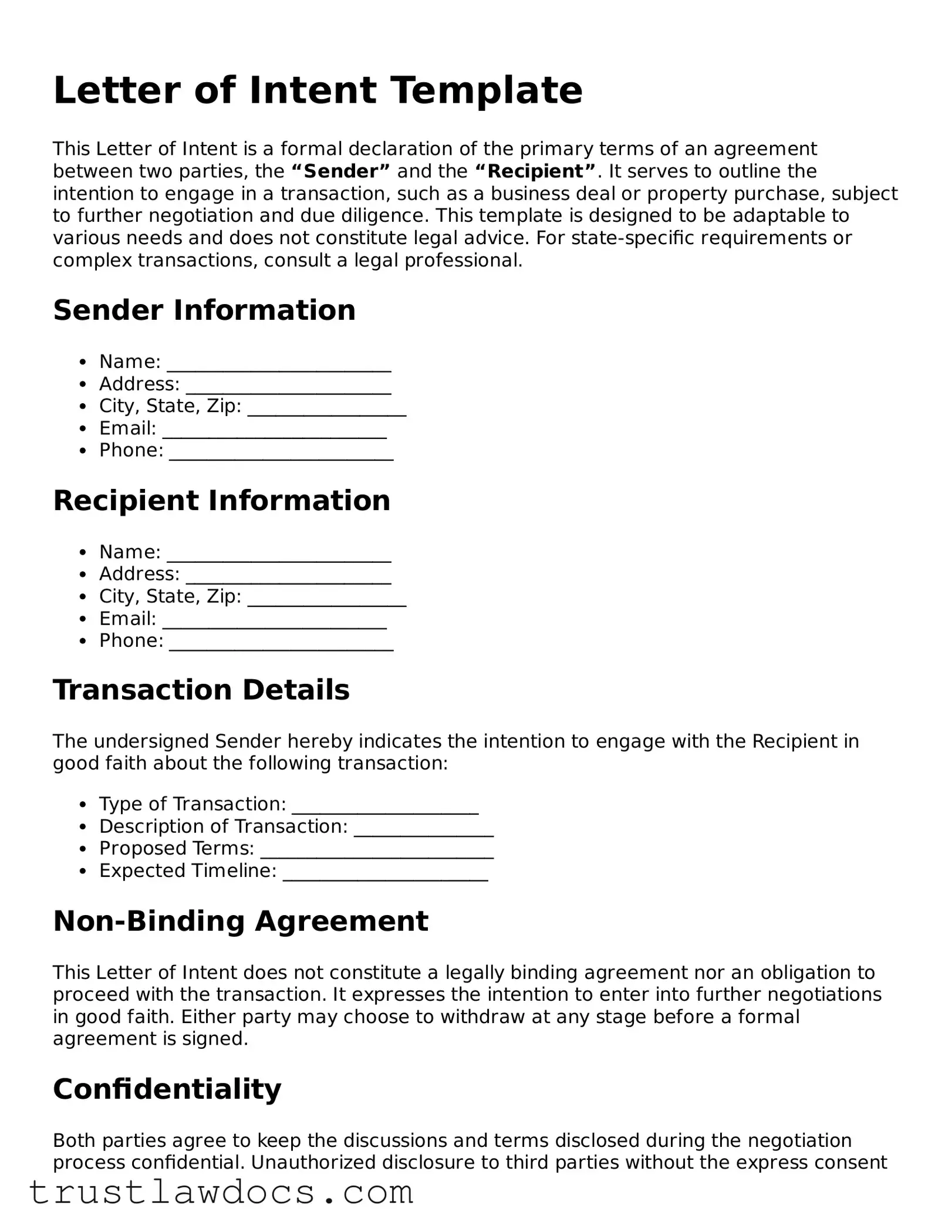What is a Letter of Intent?
A Letter of Intent (LOI) is a document that outlines a preliminary agreement between two parties before the finalization of a deal. It summarizes the main points of a proposed deal, including details on the scope of the transaction, terms, and conditions, and sometimes, the proposed price. It's important to note, however, that it is usually not legally binding regarding the main terms, but it can include binding provisions like non-disclosure agreements or a promise not to negotiate with another party for a specified timeframe.
When should I use a Letter of Intent?
A Letter of Intent should be used in the initial stages of a negotiation. It is an effective tool for expressing a serious commitment to move forward with a transaction while still allowing room for negotiation and due diligence. Common scenarios include mergers and acquisitions, business purchases, real estate transactions, or large-scale investments.
Is a Letter of Intent legally binding?
Generally, a Letter of Intent is not legally binding in terms of the main transactional agreements. However, it can contain clauses that are binding, such as confidentiality agreements or exclusivity agreements. It is crucial to carefully read and understand these sections, as failure to adhere to them can lead to legal consequences.
What key elements should be included in a Letter of Intent?
Key elements of a Letter of Intent include the identification of the parties involved, a description of the transaction, the key terms and conditions agreed upon, any binding provisions (such as confidentiality agreements), and a timeframe for negotiations or further actions. It may also outline the structure of the proposed deal and include preliminary purchase price considerations.
How does a Letter of Intent differ from a contract?
While a Letter of Intent signifies the intention to enter into a contract and outlines the terms of a future agreement, it generally does not bind the parties to those terms (with the exception of specific binding clauses). A contract, on the other hand, is a legally binding agreement where all parties have agreed to the terms and conditions as outlined, committing them to comply with those terms.
Can I withdraw from a Letter of Intent?
Yes, since a Letter of Intent typically does not bind the parties to the completion of the transaction, a party can usually withdraw from the agreement. However, this does not apply to any legally binding clauses that may have been included in the document. It's important to review the document and seek legal advice if you're considering withdrawing after signing a Letter of Intent.
What happens after a Letter of Intent is signed?
After a Letter of Intent is signed, the parties usually proceed with a more detailed examination of the transaction, known as due diligence. During this stage, the parties verify all material facts and figures, review contracts, and assess any potential legal or financial risks. Based on the findings, the parties may proceed to finalize the deal through a definitive agreement, adjust the terms outlined in the LOI, or decide not to move forward with the transaction.
Does a Letter of Intent need to be notarized?
In most cases, a Letter of Intent does not need to be notarized. The main purpose of notarization is to verify the identity of the signatories and ensure that the signatures are genuine. Since an LOI is generally not considered a legally binding contract regarding the transaction's main terms, notarization is not typically required. However, this can vary depending on the nature of the transaction and local laws, so consulting with a legal professional may be beneficial.
Can a Letter of Intent be changed once it’s signed?
Yes, a Letter of Intent can be changed after it's signed if all parties involved agree to the modifications. Any changes should be made in writing, and a revised LOI should be issued to reflect these adjustments. This ensures all parties have a clear and up-to-date understanding of the terms and intentions.
